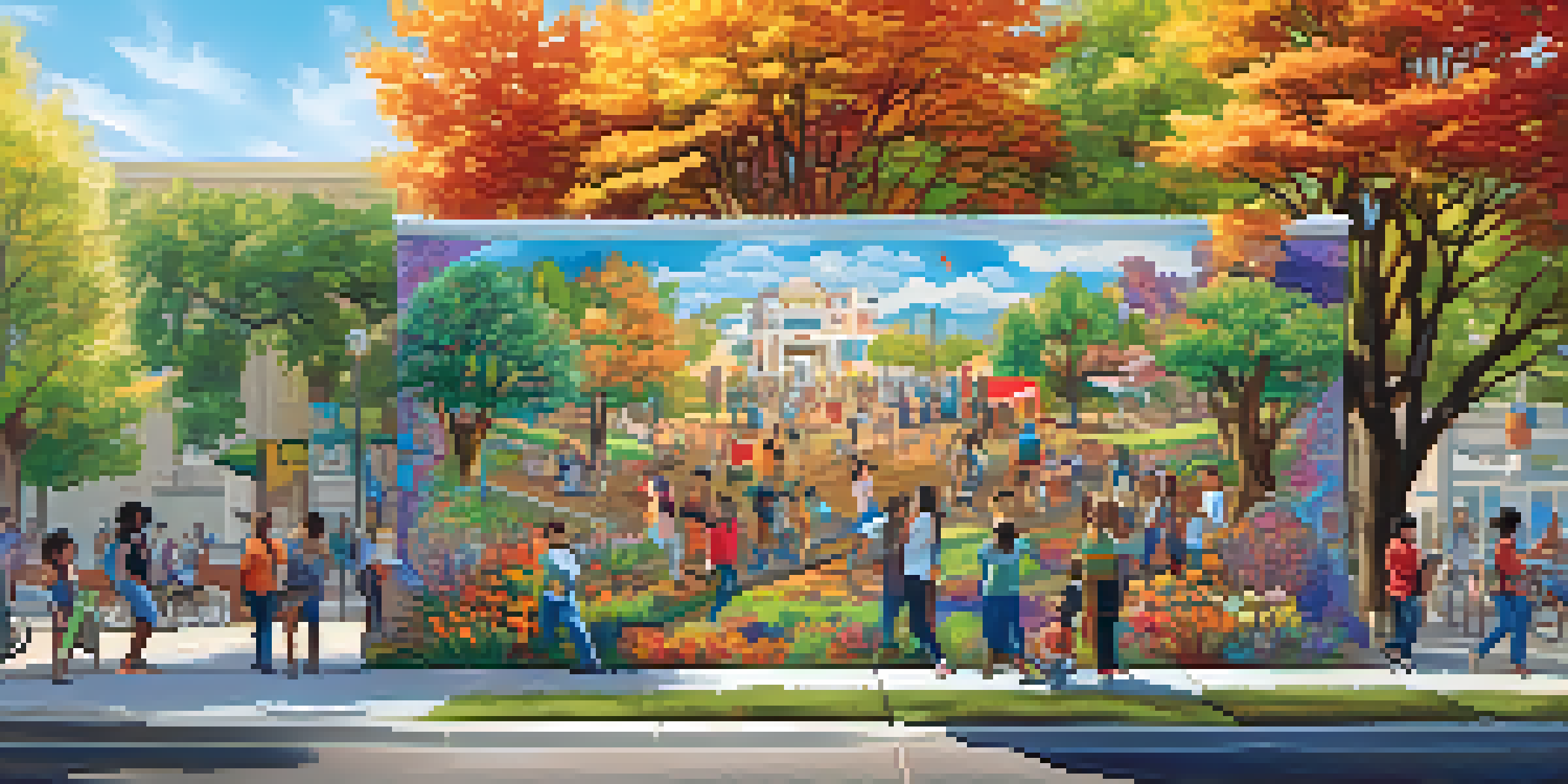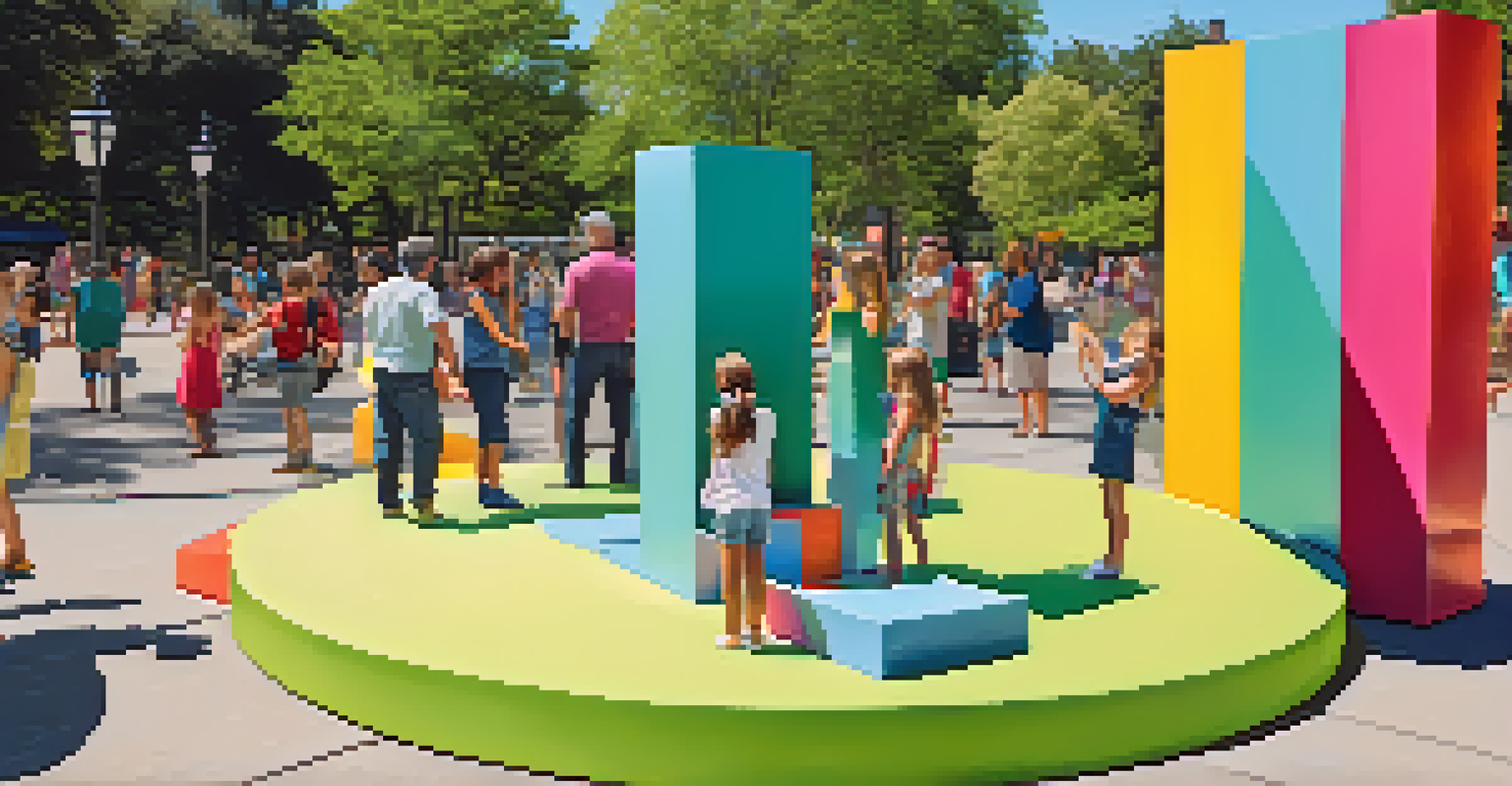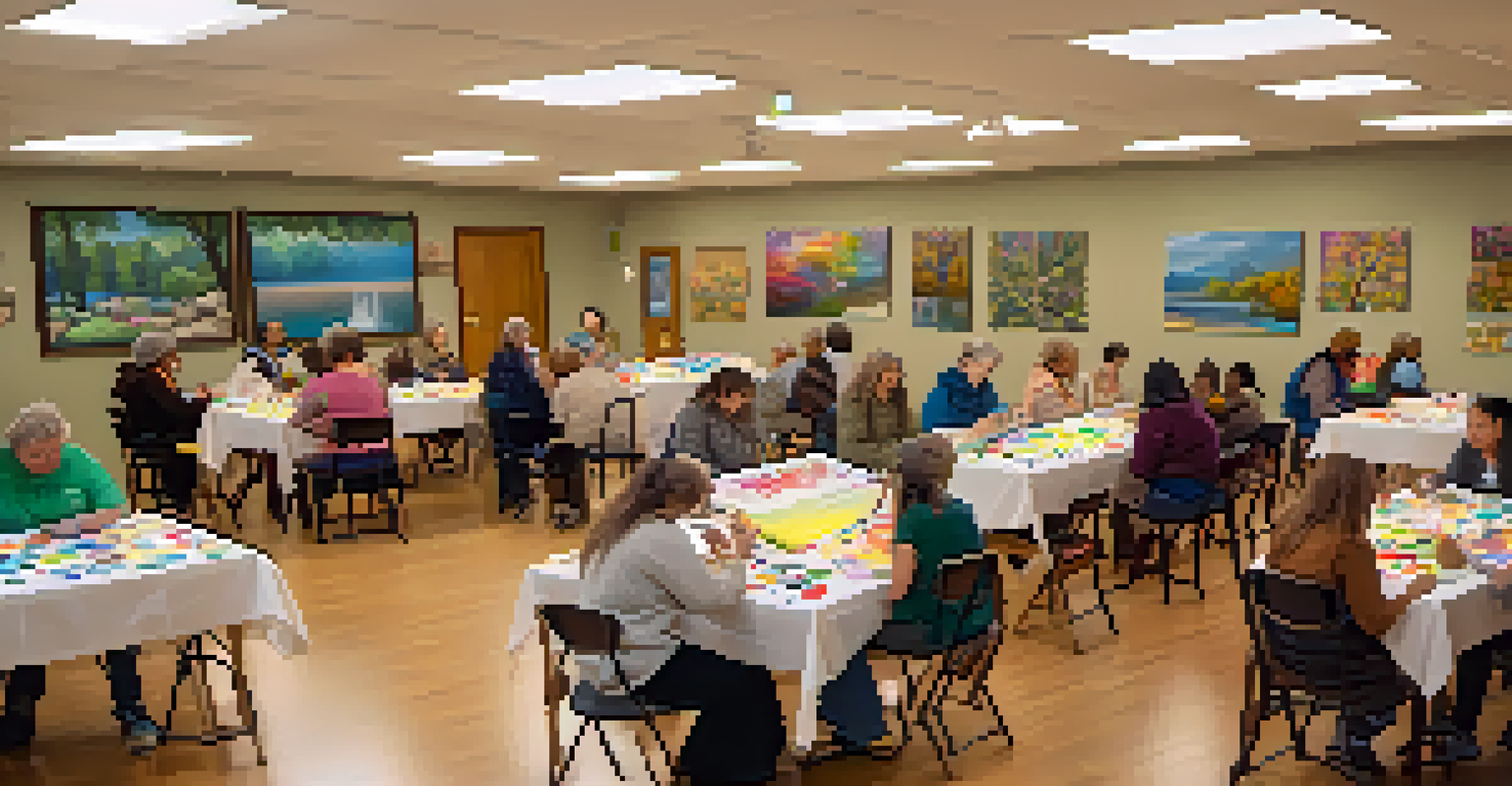The Role of Art in Building Community and Human Connection

Art as a Universal Language Bridging Differences
Art transcends cultural and linguistic barriers, acting as a universal language that connects people. Whether it's a mural on a city street or a song played in a local café, art speaks to emotions and experiences common to all. This shared understanding fosters a sense of belonging, allowing individuals from diverse backgrounds to connect on a deeper level.
Art enables us to find ourselves and lose ourselves at the same time.
For instance, consider a community mural created by local artists that reflects the neighborhoods' stories and struggles. This piece not only beautifies the area but also serves as a conversation starter, encouraging residents to share their interpretations and experiences. As people engage with the artwork, they find common ground, cultivating a stronger community bond.
By providing a platform for expression, art invites dialogue and understanding, highlighting our shared humanity. It reminds us that, despite our differences, we all seek connection, making art an essential tool in building cohesive communities.
Promoting Social Cohesion Through Collaborative Art Projects
Collaborative art projects bring people together to create something meaningful, promoting social cohesion. These initiatives often involve workshops, community gatherings, or public installations where individuals can contribute their ideas and skills. As they work side by side, participants develop friendships and a sense of ownership over the final outcome.

Take, for example, a community garden project that combines gardening with art. Residents might paint planters, create garden signs, or design a mural that reflects their collective vision. This hands-on collaboration not only beautifies the space but also fosters relationships, as people share their stories and skills while working towards a common goal.
Art Unites Diverse Communities
Art serves as a universal language that fosters connection and understanding among individuals from different backgrounds.
Through these collaborative efforts, participants learn from one another, breaking down barriers and building trust. The shared experience of creating art fosters a sense of unity that extends beyond the project, encouraging ongoing engagement within the community.
Art in Public Spaces: A Catalyst for Community Interaction
Public art installations serve as a catalyst for community interaction, inviting people to gather and engage. Whether it's a sculpture in a park or an interactive art piece, these installations often become focal points for social activity. They provide a space where individuals can meet, converse, and connect, enriching the community experience.
Creativity takes courage.
For instance, a local artist might create an interactive mural that encourages passersby to add their own touches or messages. This not only transforms a static piece into a dynamic one but also creates opportunities for connection as people share their contributions and stories. Each interaction adds another layer to the artwork, creating a living testament to community collaboration.
By encouraging foot traffic and socialization, public art transforms ordinary spaces into vibrant hubs of activity. It inspires curiosity and fosters a sense of ownership, as community members see their contributions reflected in the art that surrounds them.
Art as a Tool for Healing and Resilience in Communities
Art plays a vital role in healing and building resilience within communities, especially in times of crisis. It provides an outlet for individuals to express their emotions, process trauma, and find solace. Through creative expression, people can navigate their experiences and foster a sense of hope and recovery.
Consider how art therapy programs in schools or community centers help individuals cope with loss or hardship. Participants often find empowerment in sharing their stories through various art forms, whether it's painting, writing, or performing. This shared vulnerability strengthens connections among participants, creating a supportive environment where healing can occur.
Collaboration Builds Strong Bonds
Collaborative art projects create meaningful experiences that promote social cohesion and strengthen community ties.
Moreover, art can serve as a powerful reminder of a community's strength and resilience. Murals commemorating significant events or honoring local heroes can inspire pride and unity, reinforcing the idea that together, we can overcome challenges. In this way, art becomes a beacon of hope, helping communities to heal and grow stronger.
Cultivating Cultural Identity and Pride Through Artistic Expression
Art is a powerful medium for cultivating cultural identity and pride within communities. It allows individuals to express their unique heritage and share their stories, creating a richer, more diverse cultural landscape. This expression not only fosters pride but also encourages understanding and appreciation for different backgrounds.
For instance, cultural festivals featuring local artists, musicians, and performers celebrate the unique traditions and histories of a community. These events invite residents to participate, learn, and share, reinforcing a sense of belonging and identity. As people engage with the arts, they develop a deeper connection to their roots and to one another.
By valuing and promoting diverse artistic expressions, communities can create an inclusive environment where everyone feels represented. This celebration of culture strengthens community ties, fostering collaboration and mutual respect among residents, and ultimately enriching the community as a whole.
Education and Art: Inspiring Future Generations of Creatives
Incorporating art into educational programs inspires future generations to explore their creativity and connect with their communities. Schools that prioritize arts education often see students develop critical thinking skills, cultural awareness, and emotional intelligence. These skills are essential for fostering a sense of community and encouraging collaboration.
Art programs in schools can involve everything from painting to theater, allowing students to express themselves in various ways. For example, a school might host an art showcase that invites families and local residents to celebrate student creations. This not only highlights the students' talents but also strengthens community ties as families come together in support of the arts.
Innovation Shapes Future Art
Embracing technology and digital platforms enhances artistic expression and community engagement, making art more accessible than ever.
By nurturing creativity and collaboration, educational art programs prepare students to engage with their communities as informed, empathetic individuals. The skills and connections they develop through these experiences can lead to a more vibrant, participatory community, ensuring the legacy of artistic expression continues to thrive.
The Future of Art and Community: Embracing Innovation
As technology evolves, the intersection of art and community continues to transform, offering new ways to connect and engage. Digital platforms and social media allow artists to reach wider audiences and foster virtual communities. This innovation not only democratizes art but also makes it more accessible to diverse populations.
For example, online art challenges or virtual exhibitions enable artists to showcase their work and collaborate with others from around the globe. These platforms facilitate conversations and connections that transcend geographical boundaries, enriching the community experience. In this digital age, art becomes a powerful tool for uniting people around shared interests and passions.

Looking ahead, embracing innovation in art will be crucial for communities seeking to adapt and thrive. By leveraging technology and fostering inclusivity, we can ensure that art remains a vital force in building connections and strengthening community ties for generations to come.